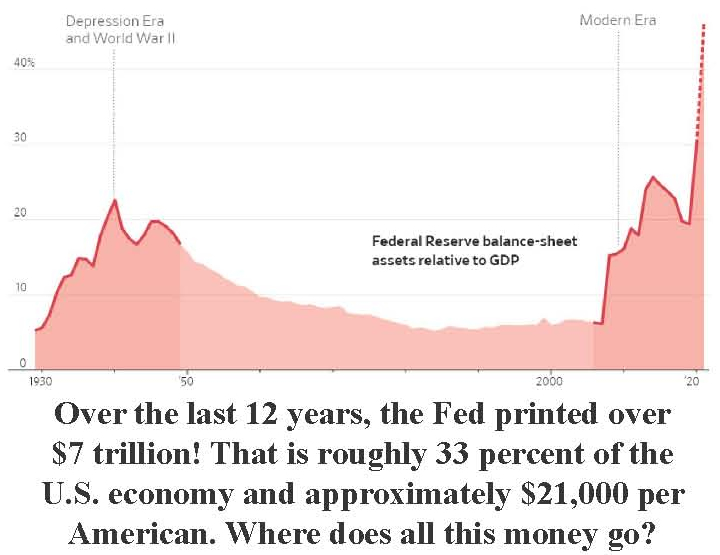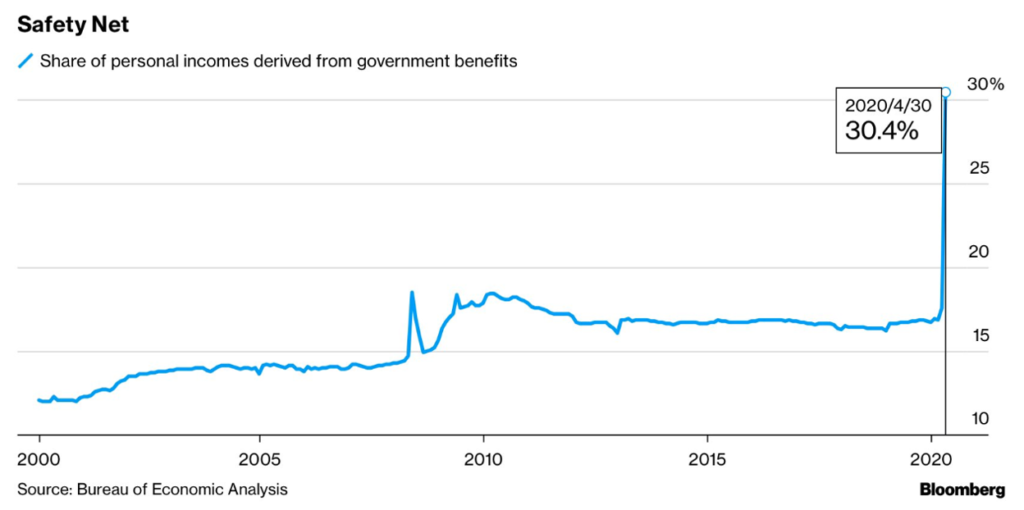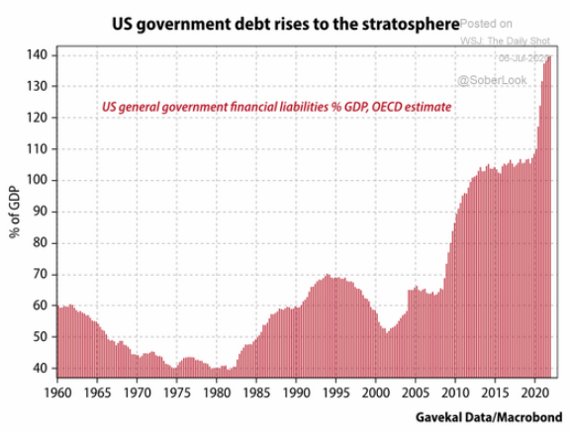I love Warren Buffett’s metaphor about the tide going out. It’s hilarious and true. Jerome Powell’s response demonstrates the magnitude of the task at hand in 2020. Now, a confession: Jerome Powell never said he could stop the tide—at least not in words. However, he is trying to stop the economic tide from allowing struggling businesses to borrow more and more money until the current global healthcare crisis is over.
A little background: When the federal government exceeds its budget, it must borrow. There is only one government agency where this does not apply, the Fed. My favorite metaphor for the Fed is the hammer. To a hammer, everything looks like a nail. Whether we are in a real estate crisis or a global pandemic, the Fed has one response: create money. And because it does not have to borrow, there is no limit to the amount it can make. The Fed wields a hammer of infinite size.
Just as you may have projects at home that require other tools, it makes sense that a hammer cannot solve all of America’s problems. A pandemic seems like it may be one of these. It has not stopped the Fed from trying. In less than 3 months in 2020, the Fed created more money than it did during the previous 12 years combined. (That includes the 2008 Great Recession and the trillions of dollars to get out of it.)

A consequence of the unprecedented government intervention is a massive amount of wealth creation. The Fed’s money goes mostly into debt markets, which pushes prices higher and makes the owners of assets wealthier. The wealthiest 10 percent of Americans own approximately 80 percent of market assets, so there is an unintended consequence of increasing the wealth gap. This is not the Fed’s fault exactly. Remember, it may have unlimited amounts of money, but it is really limited in how it can spend it.
You may be wondering, doesn’t printing money create inflation? Why haven’t we seen it in the last decade? Inflation is rising prices. It has averaged only 2 percent despite the $7 trillion created by the Fed during the previous 12 years and the $27 trillion borrowed by the federal government, most of this over the last 20 years. Instead, let’s describe it as follows: “Inflation is when prices go up for the stuff you want.” By that definition, I think inflation has been higher than 2 percent.
So, will we see inflation get even worse? All it takes is for demand to grow faster than supply, but this hasn’t happened yet. Consider investors like Jeff Bezos, Bill Gates, and Warren Buffett. When the Fed pushes up the value of their investments, do they buy another home or a big-screen TV? The wealth creation that the Fed engages in is unlikely to turn into major inflation unless it creates a significant increase in demand. Once consumers get accustomed to rising prices, then further increases may follow.
If the Fed had written checks out to every American for $21,000, there would have been a massive increase in spending. Demand would have been way beyond supply, and the prices of homes, cars, and other items would have skyrocketed. The Fed cannot do this, and it wouldn’t want to. Stable prices and full employment are its two mandates.
However, I believe that a more mild increase in inflation may come in the next decade. While the Fed’s money went into financial assets, there was an effort by the federal government to help Americans more directly.
The CARES Act provided $1,200 in cash to most Americans, including approximately 70 million children and over a million deceased. In addition to this, around 20 million unemployed Americans received a $600 per week boost to unemployment benefits.
All this adds up to a lot of extra stimuli, and it has had a more direct impact on spending, saving, and even investing. Approximately 30 percent of all income is now coming from the government.

The federal government is $27 trillion in debt, which is well beyond the size of our entire economy. And there may be even more stimulus coming.
As this stimulus works its way into the economy over the coming years, we may see inflation begin to rise for the first time in a long time.
Another potential impact of the Fed’s actions is also unintended. We call it moral hazard. If we avoid the pain and devastation of recession, then when will we learn the hard lessons?

Finally, will all this help productivity and innovation or hinder it? Will we have to pay off any of this debt, or will we use inflation to make it less meaningful? Only time will tell.
Even with all the uncertainty, the Fed firmly believes it does not have much choice. Jerome Powell likes to describe the Fed stimulus as a bridge to keep Americans out of financial harm until this crisis has passed. This is what I would call the Great Financial Experiment of 2020. This is not only happening in the United States but all over the developed world.
The success so far has been stunning and without major unintended consequences, but it’s also still early–very early. So, as investors, we look for opportunities to participate, but we never forget the risks. Only time will show if the United States of America and the rest of the developed world successfully stopped the tide from going out.



